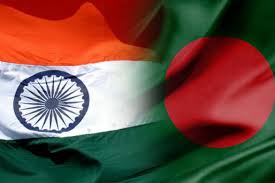Digital journalism also known as online journalism is a contemporary kind of journalism where editorial content is disseminated via the Internet as opposed to publishing via print or broadcast. What constitutes ‘digital journalism’ is debated by students. Yet the principal product of journalism, which is news and features on current affairs, is presented solely or in combination as text, audio, picture and some interactive forms, and distributed through digital media programs.
Fewer barriers to entry, lowered distribution costs, and diverse computer networking technologies have contributed to the widespread pattern of digital news media. It has democratized the flow of data that was previously held by traditional media, including newspapers, magazines, radio, and TV.
India’s internet penetration is low – only 3.7%. Besides, most web sites are only available in English, which skews the viewership to only 10% of the population that is centered in urban cores. Conversely, India ranks third in number of Twitter users. LinkedIn provides a group that targets members that are online journalists in India with content, links, and job opportunities unique to that section. Popular discussions offer members an opportunity to share opportunities, discuss activities that affect the industry, and provide peer review for articles before publishing on the net. With the issue of high speed information and faster mobile data services such as 3G and LTE, videos from some of India’s best TV journalists have been made available online. Both NDTV and CNBC, two TV news reporting power houses in India, also suffer a substantial online presence. The top five journalists in India all come from within the social statuses of these places. Another emerging favorite platform for journalists is Twitter. Journalists from all walks – Business, Political, Sports, and Religion – have come together to make a list for simplicity of following the person or topic that one might find interesting.
The internet in India was not available to private users until 1995. By 1998 there were only 48 daily newspapers that operated along the cyberspace. By 2006 the number has steadily rose to reach 116 newspapers and is anticipated to arise as more people in India get access to the network. The first newspapers adopt an online format were generally English speaking because they bore more of a global consultation. Nevertheless, as more users gained access more Indian language papers began to surface. A good deal of these new websites were generic versions of the daily paper and were not edited once published. They were operated by minimal staffs. In some cases a single editor would upload data to a third party pre-formatted interface which would allow stories to be brought out under general headings such as Local News, International, Sports, etc. A heavy majority of online papers in India doesn’t receive advertisement revenue for their web editions and, with the exception of the major papers, most websites are being run at a personnel casualty. Most publications have been boring to incorporate modern web features such as TV clips or imbedded audio. One of the greatest concerns is economic viability due to lack of advertising revenue. India journalism sites have also been slow to embrace the advanced pattern of online buying. This intends that when someone sees the website they are unable to tell the paper directly or buy products through ads.
In India
Online journalism in India is a growing field shared between traditional media and the growing blogging community. Large media companies, traditionally print and television focused, continue to dominate the journalism environment now online but a growing group of dedicated bloggers are providing an independent voice.
Growth
Although Indian newspapers were using computers for writing and page layout as early as 1987 they were slow to go to online versions of their document. By 1998 only forty-eight papers had online editions. By 2006, the count had climbed to 116. This despite the fact that in 2007 India had 42 million Internet users and was ranked fifth among online populations. The number of online news editions is seen as particularly low because of the large number of languages spoken in India. Of the 22 languages officially recognized, only 12 of the non-English languages were accounted for in a survey of online versions.
Blogging has become quite popular in India
The largest news and media companies now include web logs in their online offerings. Websites such as The Times of India have a blog section as does The Economic Times. American online publications are also offering blogs to the Indian grocery store. The Wall Street Journal blog India Real time is staffed by journalists exclusively from New Delhi and Mumbai and focuses on analytic thinking of issues happening in India. In September 2010, The Wall Street Journal expanded its offering to include the India Real time blog in Hindi in addition to the English language. Dainik Jagran, India’s most read newspaper, also runs a site committed to blogging. The most popular amateur blog topics in India are technology, cricket, finance, business, and coupons. And among them English is the predominant language used. Indian blog topics include a broad variety including literature, politics, investing, celebrities, medicine, journalism, travel, environment, web-design, podcasting, humor, music, and more. Full-time bloggers have been covered to earn every bit much as Rs 40,000 to Rs 50,000 with part-time bloggers earning as much as Rs 10,000 to Rs 15,000 in a month. Some well-known amateur blogs receive as many as 3 million page views per month. One notable Indian blogger, Amit Agarwal, runs the blog tech inspiration at www.labnol.org and maintains indianbloggers.org. He has been featured in the Wall Street Journal among other publications for his contributions to the Indian blogging scene.
Critique
Many online newspapers in India are criticized for being hastily thrown together with little attention from publishers about content. A bulk of websites lacks simple features such as “about us” or feedback. While the major publishers like the Times Group will list email addresses of its writers and editors many of the small daily newspapers only have a simple embedded box on their web site for feedback. This makes it hard for lecturers to pass along with newspaper staff.
Online media with print products, such as OPEN magazine, have been instrumental in providing checks and balances on other sorts of media. OPEN broke that Barkha Dutt, widely seen as India’s top journalist, was involved with the radio tapes controversy, which very little of the print media discussed. A radio, a lobbyist, was involved in corruption regarding the exercise and sale of 2G wireless spectrum. Her effort to rehabilitate her reputation was hampered by the combative style she tried to answer it with.
In short
Some have insisted that greater level of creativity can be worked out with digital news media when compared to traditional journalism and traditional media. The digital aspect may be key to the journalistic message and remains, to some extent, within the creative command of the author, editor, and/or publisher.
There is no absolute agreement as to what constitutes digital journalism. Mu Lin argues that “Web and mobile platforms demand us to embrace a political program-free outlook for an all-inclusive production approach – create the (digital) contents first, then distribute via appropriate platforms.” The repurposing of print content for an online audience is sufficient for some, while others require content created with the digital medium’s unique features like hypertextuality. Fondevila Gascón adds multimedia and interactivity to complete the digital journalism center. For these, online journalism can be functionally differentiated from other sorts of journalism by its technology component which journalists have to consider when creating or displaying content. Digital journalistic work may range from purely editorial content like CNN (produced by professional journalists) online to public-connectivity, websites like Slashdot (communication lacking formal barriers of entrance). The difference of digital news media from traditional journalism may be in its reconceptualised role of the reporter in relation to consultations and news systems. The first moments of society for instant information were important for the development of digital news media. Nevertheless, it is probable that the exact nature and uses of digital journalism will not be fully experienced for some time.





16 Comments. Leave new
Digital journalism is gaining wide spread popularity nowadays. it is also bringing up issues which at times are ignored by the main stream media.
Sankalp, amazing article. I liked it very much, rather enjoyed reading it. I believe you have touched every aspect of digital journalism.
Personally, I feel digital journalism won’t be able to replace print journalism in India. It is hard. It may take some share of the market from print journalism but the latter will continue to dominate.
Thank you Akul…
a very good article.
Digital jornalism can do much more in India as digital media is the fastest way of sharing news!
Well written!
Digital Journalism is becoming quite popular in India but it still needs a push!!
Could have been your own ideas and knowledge
Digital journalism is more popular today. Nice..
Digital Journalism will make its way too far in India in the times to come.Good Job!!
Well said, digital journalism is taking a boom all over the globe, then why not make it ore accessible to Indians.
Its a great article
A very good article. Such good explaination.good job!
This is an amazing article 🙂
Its good that u have provided both Info and critique as well
Thank you all for your amazing responses 🙂
Digital Journalism is a new trend in Journalism 😀
the article is explained in a very detailed manner !